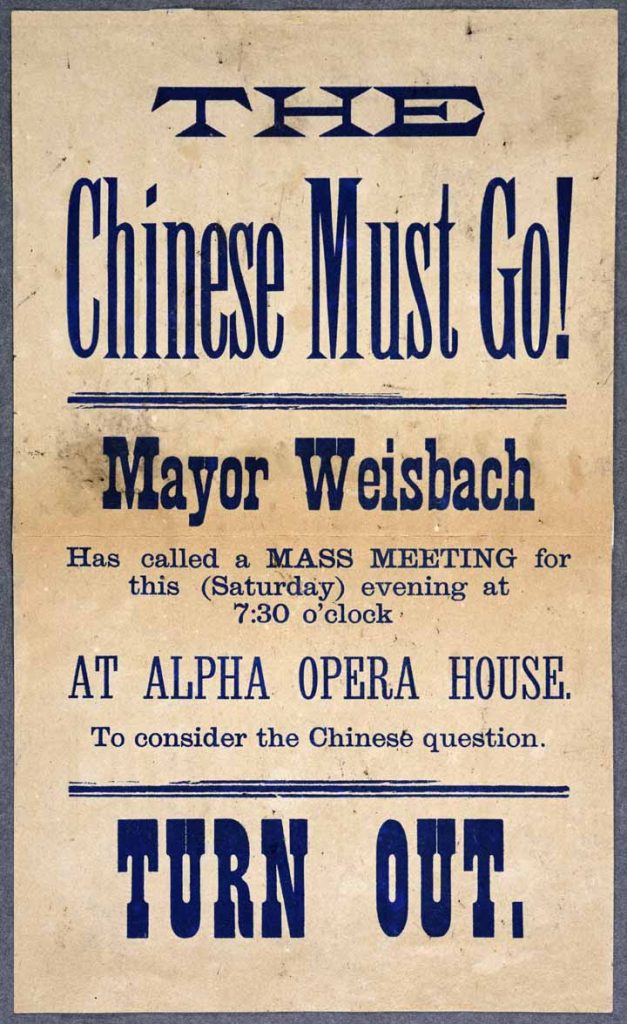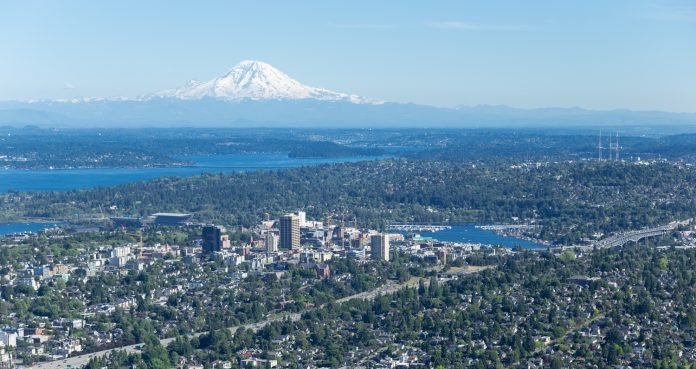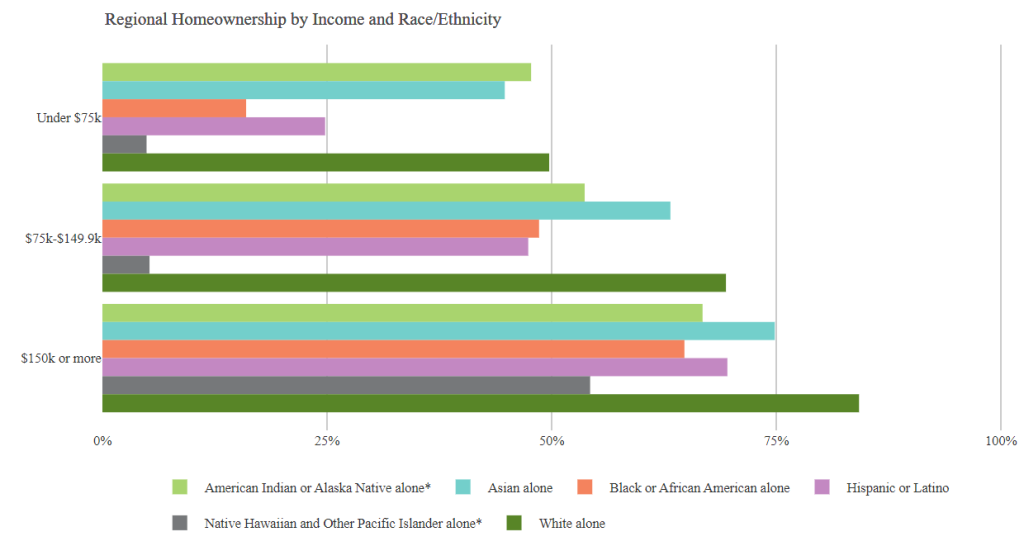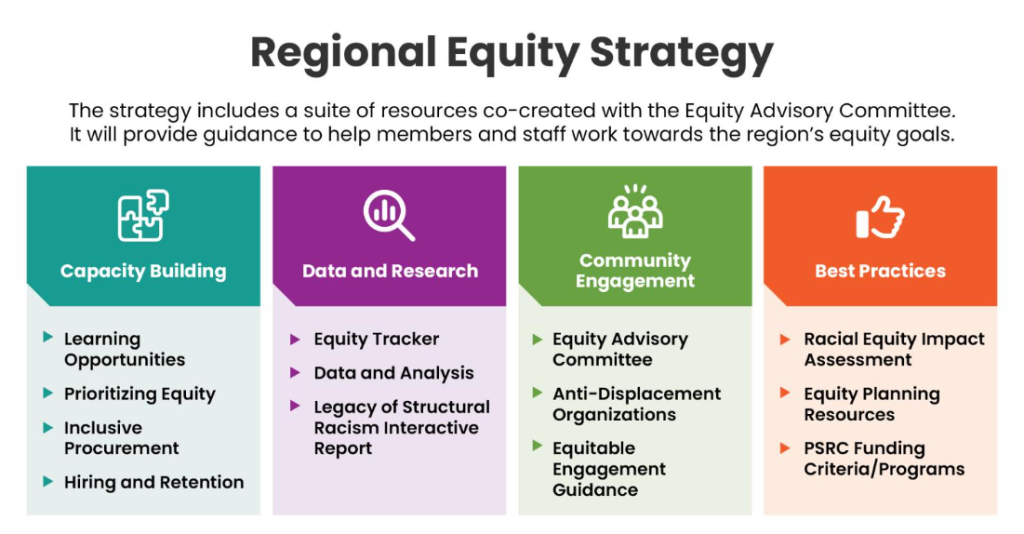On July 6, the Puget Sound Regional Council (PSRC) launched their Legacy of Structural Racism Interactive Report. While this report is far from the first piece of literature to connect policies such as single-family zoning to structural racism, it provides a high-level overview and collection of resources on this history of structural racism in the Puget Sound region. It is also authored by a government agency that is key to the long-range land use, transportation, and economic planning of the Puget Sound region and is empowered with the distribution of federal funding.
Before discussing present day zoning and highway construction, the interactive report stretches back to colonization of the central Puget Sound area in the 1700s. The timeline charts the suppression and removal of Native peoples from their land. It then details the arrival of other nonwhite peoples, including Asian immigration and the Great Migration of African Americans. Here, the report also explores some of the history around denial of basic rights like voting and land ownership to these populations and their expulsion. The Tacoma Method, which resulted in the expulsion of the entire Chinese community of Tacoma in 1885, was discussed here in The Urbanist.

Then, we get to the land use and home ownership policies, of which many are still with us today. Redlining and other policies of overt residential segregation have been explored many times in The Urbanist. While those practices have broadly been done away with, the agency’s definition of structural racism includes policies that didn’t explicitly mention race but had inequitable outcomes. On that note, PSRC has acknowledged that “economically exclusionary zoning laws have persisted and limited options to build, rent, and own the most affordable types of housing.” Later, the report traces a line between this and single-family zoning in the part of their report that discusses contemporary policies, highlighting how this practice disproportionately excludes people of color from many neighborhoods, limiting their access to opportunity.
This report does much to pair the historic suppression of nonwhite wealth building with the retention of land use policies that increase the cost of homeownership. It demonstrates the legacy of these practices in the massive wealth gap between White and Black households, wherein for every dollar a White family has, a Black family has a little more than 10 cents. It also points to the legacy of these practices in the predominance of single-family and exclusionary zoning across the Puget Sound region. From there, PSRC, makes the linkage between the wealth gap and single-family zoning with the decreased likelihood of nonwhite residents living in single-family neighborhoods due to the chain of discriminatory policies that blocked people of color from wealth building opportunities.
Highways, both their construction and subsequent mitigation, are another set of policies that the report discusses. The construction of the modern highway system echoes much of the policies that dispossessed people from their homes and demonstrated inequities with the mitigation provided to impacted communities. PSRC’s report discusses how whiter and wealthier neighborhoods like Mercer Island were able to get highway lids and public parks to mitigate highway construction. Meanwhile, neighborhoods like the Chinatown-International District were denied mitigation.
The PSRC report then demonstrates the modern and disproportionate impact of extant highways with the higher likelihood of minorities living within close proximity of freeways compared to White residents. The report then cites research that shows that people of color are also disproportionately exposed to pollution and its negative health effects. Locally there have been efforts to rewind the effects of freeways. Reconnect South Park is one of these efforts and it hopes to reconnect the neighborhood, divided in half by SR 99, by removing a section of the highway.
While it’s not rich in depth, the report contains much more to be explored. For example, the first major policy that PSRC charts in their timeline is the Donation Land Claim Act of 1850 that allowed White male citizens over 18 to take 320 acres of land in the Oregon Territory from the region’s Tribes. This first law gave White settlers 54,000 acres in today’s King, Kitsap, and Pierce counties, one of many policies that paved the way for the major and modern racial wealth gap.
Much more depth on structural racism in the Puget Sound region can be explored. Japanese American internment and dispossession are discussed in the report, but Strawberry Days, by David A. Neiwert, offers a deeper look into how Japanese farmers lost their land and how racist practices prevented the reclamation of their land. The Color of Law shines more light on residential segregation and the use of exclusionary zoning to prevent and slow integration of neighborhoods.
This isn’t to dismiss the relevance of the interactive report. As a PSRC report, the document will serve as a resource for the region’s urban planners and elected officials to reflect on their jurisdictions’ history of structural racism and address it accordingly in planning and policy. Plus, PSRC staff have discussed the interactive report as being a living document, one that can continue to evolve and grow. This report is but another tool in their Regional Equity Strategy that PSRC will use and share with the region’s cities, counties, towns, Tribes, ports, and transportation agencies to prepare for growth in the central Puget Sound region.
Editor’s Note: Shaun works at the Puget Sound Regional Council as an Assistant Planner.
Shaun Kuo is a junior editor at The Urbanist and a recent graduate from the UW Tacoma Master of Arts in Community Planning. He is a urban planner at the Puget Sound Regional Council and a Seattle native that has lived in Wallingford, Northgate, and Lake Forest Park. He enjoys exploring the city by bus and foot.








